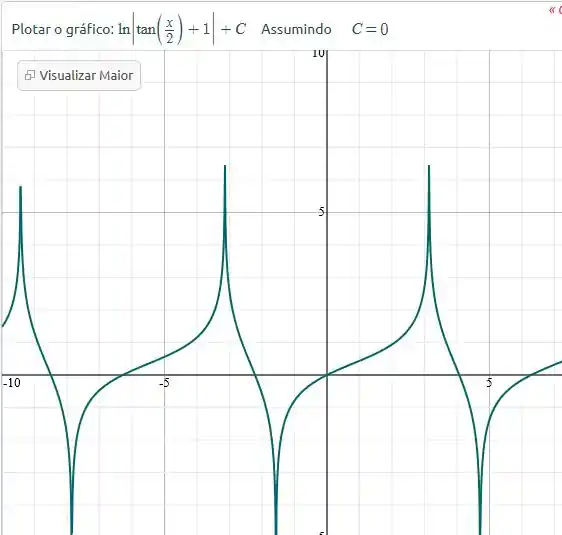- Faça uma substituição dada por (5) para converter o integrando em uma função racional de e, então, calcule a integral. (b) Se o leitor dispuser de um CAS, use-o para calcular a integral (sem usar substituições) e, então, confirme que o resultado é equivalente de (a).
Passo 1
Nós usaremos a fórmula:
Usaremos como substituição:
Vamos começar a fazer algumas manipulações usando a fórmula dada no início do exercício:
Então:
Podemos dizer que:
E também:
Logo:
Passo 2
Então:
Então:
Então:
Substituindo :
Passo 3
Utilizando um CAS:
